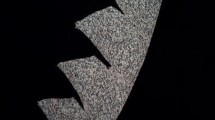Abstract
Since industry is rapidly developing, either locally or globally, manufacturers witness harder challenges due to the growing competitivity. This urges them to better consider the four factors linked to production and output: quality, quantity, cost and price, quality being of course the most important factor which constitutes their main concern. Efforts will be concentrated—in this research—on improving the quality and securing more accuracy for a machined surface in ball-end milling. Quality and precision are two essential criteria in industrial milling. However, milling errors and imperfections, due mainly to the cutting tool deflection, hinder the full achieving of these targets. Our task, all along this paper, consists in studying and realizing the simulation of the deflected cutting tool trajectory, by using the methods which are available. In a future stage, and in the frame of a deeper research, the simulation process will help to carry out the correction and the compensation of the errors resulting from the tool deflection. The corrected trajectory which is obtained by the method mirror will be sent to the machine. To achieve this goal, the next process consists—as a first step—in selecting a model of cutting forces for a ball-end mill. This allows to define—later on—the behavior of this tool, and the emergence of three methods namely the analytical model, the finite elements method, and the experimental method. It is possible to tackle the cutting forces simulation, all along the tool trajectory, while this latter is carrying out the sweeping of the part to be machined in milling and taking into consideration the cutting conditions, as well as the geography of the workpiece. A simulation of the deflected cutting tool trajectory dependent on the cutting forces has been realized.
Similar content being viewed by others
References
Budak E, Altintas Y (1994) Peripheral milling conditions for improved dimensional accuracy. Int J Mach Tools Manuf 34:907–918
Law KMY, Geddam A (2001) Prediction of contour accuracy in the end milling of pockets. Journal of Material Processing Techniques 113:399–405
Dépince P, Hascoët JY (2006) Active integration of tool deflection effects in end milling. Part 2. Compensation of tool deflection. Int J Mach Tools Manuf 46:945–956
Kang MC, Kim KK, Lee DW, Kim JS, Kim NK (2001) Characterization of inclined planes according to the variations of cutting direction in high speed ball-end milling. Int J Adv Manuf Technol 17:323–329
Lechniak Z, Werner A, Skalski K, Kedzior K (1998) Methodology of off-line software compensation for errors in the machining process on the CNC machine tool. J Mater Process Technol 76:42–48
Lim EM, Menq CH, Yen DW (1997) Integrated planning for precision machining of complex surfaces-III: compensation of dimensional errors. Int J Mach Tools Manuf 37:1313–1326
Smaoui M, Bouaziz Z, Zghal A (2008) Simulation of cutting forces for complex surfaces in ball-end milling. Int J Simul Model 7:57–108
Suh SH, Cho JH, Hascoet JY (1996) Incorporation of tool deflection in tool path computation: simulation and analysis. J Manuf Syst 15:190–199
Cho MW, Kim GH, Seo TI, Hong YC, Cheng HH (2006) Integrated machining error compensation method using OMM data and modified PNN algorithm. Int J Mach Tools Manuf 46:1417–1427
Cho MW, Seo TI, Kwon HD (2003) Integrated error compensation method using OMM system for profile milling operation. J Mater Process Technol 136:88–99
Seo TI (1998) Integration of tool deflection during the generation of tool path, PhD thesis. Université de Nantes-Ecole Centrale de Nantes, French
Kim GM, Kim BH, Chu CN (2003) Estimation of cutter deflection and form error in ball-end milling processes. Int J Mach Tools Manuf 43:917–924
Salgado MA, Lopez de Lacalle LN, Lamikiz A, Munoa J, Sanchez JA (2005) Evaluation of the stiffness chain on the deflection of end-mills under cutting forces. Int J Mach Tools Manuf 45:727–739
Milfelner M, Cus F (2003) Simulation of cutting forces in ball-end milling. Robot Comput-Integr Manuf 19:99–106
Author information
Authors and Affiliations
Corresponding author
Rights and permissions
About this article
Cite this article
Smaoui, M., Bouaziz, Z., Zghal, A. et al. Simulation of the deflected cutting tool trajectory in complex surface milling. Int J Adv Manuf Technol 56, 463–474 (2011). https://doi.org/10.1007/s00170-011-3213-x
Received:
Accepted:
Published:
Issue Date:
DOI: https://doi.org/10.1007/s00170-011-3213-x



